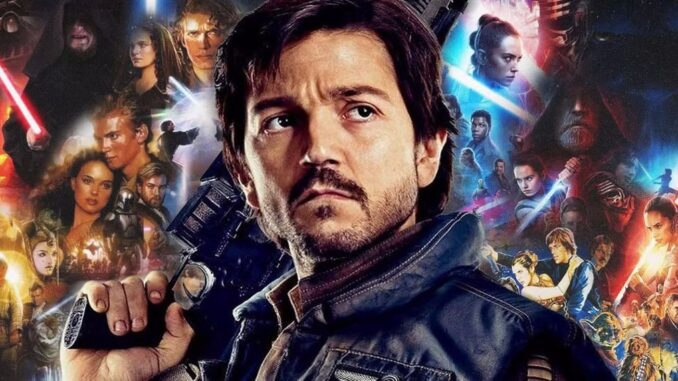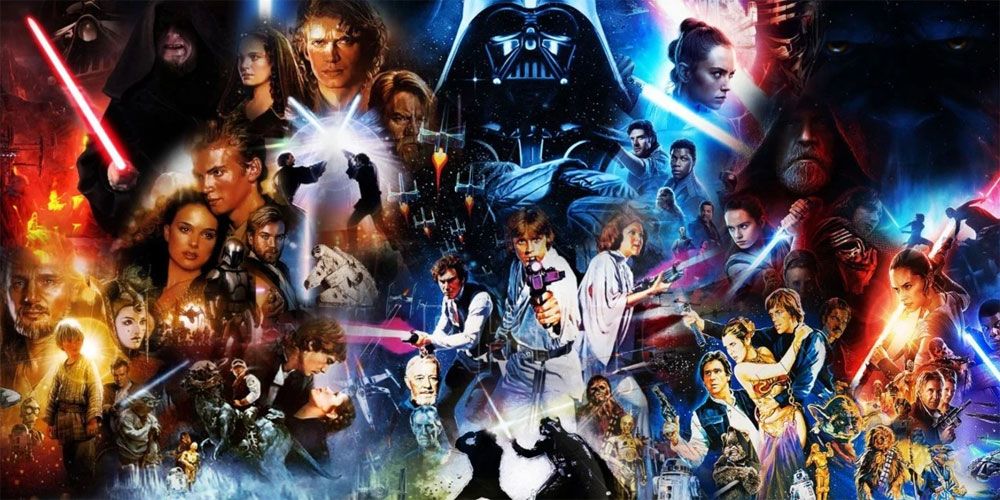
Andor Proved That Star Wars Doesn’t Need Its Trademark Elements
Most viewers think of lightsabers and the Force when imagining Star Wars, but Andor proved that Star Wars content can thrive without them.

The Star Wars universe has presented audiences the world over with one of the greatest franchises in cinematic history — if not the greatest of all time. Set in the galaxy far, far away, George Lucas’ creation has primarily focused on the war between good and evil, represented by the Jedi and Sith. However, recent projects such as Andor have shown that there’s a great deal of room for stories that don’t focus on these mystical Force users — and that’s a good thing.
Few Star Wars projects have proved as thought-provoking as Andor, despite its focus on a relatively unknown character. Set in the lead-up to the formation of the Rebel Alliance, the series tells the story of Cassian Andor as he was pulled into battling the Empire when he became a wanted outlaw. The series offered perhaps the single most mature project of LucasFilm to date, both in tone and audience, as it explored the politics behind the Empire. This series didn’t retain all the classic tropes of the high fantasy nature of the Skywalker Saga, instead carving out its own path in the galaxy. The series managed to achieve finding its own identity without detracting from what had already been created, something that charts the course into a post-Skywalker future. The stories of Luke and Anakin were great, but they shouldn’t define every future project — and Andor proves it.
For many Star Wars fans, Rogue One proved to be the greatest project released by Disney, with some even favoring it above The Mandalorian. This praise and success came despite minimal attention paid to the Force, beyond a couple of Darth Vader cameos. The film focused on the heroes of the Rebel Alliance who were responsible for acquiring the Death Star plans, such as Jyn Urso, Baze Malbus and Chirrut Imwe. Among them was the Rebellion’s assassin and spy, Cassian Andor. Though it took many by surprise, Andor managed to land his own project in the form of a TV show, which explored Imperial politics and its hero’s activities before the film. Despite focusing on non-Force using characters and paying little attention to the grander narrative of the galaxy, the series received almost universal praise.
From the time Andor was first announced, fans had questions as to exactly what the series would bring to the table. After all, it didn’t promise the flash of lightsaber duels, the spectacle of a major war or the rich history and intrigue of the Mandalorians and their culture. Instead, it took the success of Rogue One and honed in on one of the film’s most compelling characters, exploring his backstory and how he joined the Rebellion. This led to a series that explored elements of police procedural, political thriller, action and sci-fi dystopia. In fact, the series was sometimes evocative of George Lucas’ cult film THX 1138. All of this combines to show that alternate genres can co-exist alongside the signature style of the main trilogies. The series even made great use of a Jams Bond-style mission, which proved that conventional, fantasy-free action can absolutely work in the franchise.
Through the Imperial Security Bureau agents, the series traded in the “dark lord” trope for the very familiar threat of fascism. Through Mon Mothma, the series added a House of Cards-style political thriller, which set the pretext for the dissolution of the Senate as mentioned in A New Hope. The story of Cassian Andor himself was reminiscent of the expendable, disposable soldier trope, as seen in franchises like Mission: Impossible. At every turn, the franchise traded one of its typical fantasy tropes for something more grounded from genres that don’t always serve as the basis for what Star Wars is. Despite a great deal of doubt from long-time fans of the franchise, the series was hugely successful in proving that the core elements of Star Wars aren’t necessary for every project to succeed. The show’s deep dive on the dystopian nature of the Empire were what made it truly unique, and showed just how bleak the galaxy was under Palpatine’s rule.
Since the introduction of Han Solo himself, fans have made clear that a character can have no connection to the Force and still be loved. In fact, it was Han’s skepticism and relatable character arc that made many prefer him over Luke, who some saw as a classic boy scout archetype. The idea of a space-faring smuggler with a roguish personality and his Wookiee companion captivated many, especially given Luke’s inexperience in the first film. In many ways, Han was the audience surrogate, a character who was no more privy to the deeper politics and history of the galaxy than the average viewer. While the Force and lightsaber duels captivated successive generations of fans, the success of powerless characters shows projects can work without Jedi and Sith.
The Disney era of Star Wars has shown a particularly strong interest in pursuing non-Force users as major characters, such as Mando, Jyn Urso, Sabine Wren and Finn. In fact, it was through the Disney years that fans began to question just how integral the signature elements of Star Wars was to its success. While no one wants to see lightsabers or the Force go extinct, bringing a range of genre diversity to the galaxy makes it more dynamic and versatile. However, such a successful project shouldn’t be allowed to be pigeonholed or limited by a narrow understanding of what was ultimately only supposed to be the story of one family in the Skywalker Saga. Allowing the franchise to move on isn’t just great for new fans, it also helps enshrine the Skywalker Saga as its own story, rather than forcing other stories to fit the same mold.
Star Wars shouldn’t be seen as just one movie story, but rather an entire universe unto itself. Just as audiences are drawn to Hollywood itself for different genres, so too could Star Wars capture that range by offering up unique stories. In fact, George Lucas looked to a combination of westerns, Japanese cinema, old adventure serials and pulp magazines to inform his vision — all of which offer different ingredients. The Mandalorian has shown that the universe can be compelling by highlighting the western angle, while Andor did the same by exploring a HBO-style thriller. Although it is key to avoid any world-breaking changes and to maintain verisimiltude and immersion, that shouldn’t mean every project must contain the elements of the original trilogy. The series didn’t shift anyone’s understanding of Star Wars, but rather added to it.
The Star Wars universe has built up too many excellent powerless heroes and villains to make every character’s story one tied in with the mythology of the Force. For example, going all in on Boba Fett as a western-style bounty hunter makes more sense than only allowing his story to be told as it relates to Luke. In the case of Andor, Disney showed that a slow-burn project that some fans claim isn’t Star Wars at all can nonetheless achieve acclaim and success. The Jedi and Sith mythos never ceases to be entertaining for people who love it, but there’s a strong contingent of sci-fi fans who enjoy darker or more serious stories. Where the typical project from LucasFilm is a blockbuster fantasy, Andor proved the versatility of the brand with a critic-pleasing dystopian thriller.
Star Wars has room for everything from horror and westerns to adventure and drama. Andor gave fans a look at the majesty and epic scale of the galaxy from the point of view of a regular man working with the seeds of early rebellion. The series was every bit as thematically diverse as any piece of Star Wars media, but leaned into different elements than the standard movies. The Jedi were traded for rebels, the Sith replaced by Imperial agents and the most significant conflict came not from battles but rather behind-the-scenes politicking. When considering that many of the most successful shows from the 2010s were slow-burn thrillers and political dramas, it was smart of LucasFilm to capitalize on that market. When it comes to more character-focused standalone projects, Andor has laid down the template of how to move forward through genre diversity.
